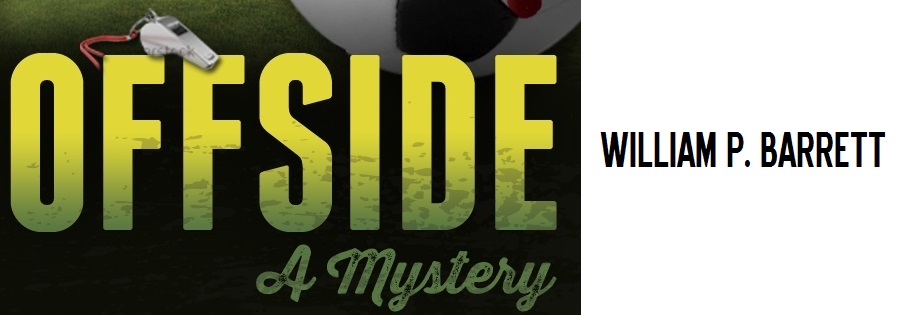Soccer’s offside law long has been the bane of players, coaches, fans and especially the many referees around the world who officiate youth matches alone without the help of flag-wielding assistant referees running the touchlines who usually are in the best position to spot the offense. The rule, one of the most misunderstood in all of sport, is chock full of definitions, exceptions, exclusions, conditions precedent and whatever.
Several times, the law of offside plays a key role in my new murder novel, OFFSIDE: A Mystery. At one point referee Rick Hermannik correctly agrees with his assistant there is no offside offense even though an attacking youth player is ahead of the next-to-last defender because the attacker never touched the ball, staying over to the side a bit as her teammate blasted the ball past the keeper into the goal.
Contrary to a widely held belief among soccer parents, it is possible for offside to take place even if a player in an offside position doesn’t touch the ball. But that doesn’t always mean the call is correct, as an incident in a recent high-level English soccer match shows.
It was a contest between Manchester United and Stoke City. Man U won 2-1. To see the play, click on the window here, wait for the commercial, then move up to 2:30 of the tape.
Man U, wearing red, was taking a close-in free kick. As the ball was kicked, Man U’s Marcos Rojo was near the goal and slightly ahead of every defender except the keeper. Clear offside position. Rojo appeared to jump in an effort to head the ball, but didn’t get high enough and missed. Still, the ball went into the net untouched from the free kick for what proved to be the winning score.
The referee allowed the goal over the protest of Stoke City manager Louis van Gaal. “We clearly think it is offside,” van Gaal told the Press Association after the match. It doesn’t matter if he (Rojo) touches it, he is clearly offside and interfering with play. He was ahead of the ball in an offside position. The referee and assistant should have cancelled it out.”
I think van Gaal was right, but not for the specific reason he stated, “interfering with play.” Let me explain.
The potential for offside arises when an attacker is in what is called offside position, ahead of both the ball and the next-to-last defender (usually, the player in front of the keeper). But that’s not enough. “It is not an offense in itself to be in an offside position,” Law 11 begins. A teammate then has to touch or play the ball. But that’s still not enough. One of three things must happen.
The first, and by far the most common, is “interfering with play.” But with an exception not relevant here, that means the player in the offside position touches the ball. Rojo didn’t touch the ball, so his actions can’t be offside by interfering with play, as the rival coach suggested.
The second is “gaining an advantage by being in an offside position.” That occurs when the player in an offside position touches a ball bounding off a keeper or other opponent who didn’t have control, or bouncing off the goal. This also requires a touching by the offside-position attacker. In any case, there was no rebounding here, let alone a touching.
The third is “interfering with an opponent.” The back of the lawbook defines this as “preventing an opponent from playing or being able to play the ball by clearly obstructing the opponent’s line of vision or challenging an opponent for the ball.” Unlike “interfering with play,” there is no requirement of a touching by the offside-position attacker.
Aha! This is precisely what Rojo did. Depending on how you want to analyze the play, he either blocked the view of the keeper as the ball hurtled in or drew an opponent (there were several around him) by trying to head the ball. Either way, in my opinion, it was an offside offense for interfering with an opponent, and it should have been called, with the goal nullified.
Now, there was a lot of fast action taking place in front of the goal–it looked more like a rugby scrum. But the referee in the center had an assistant in place, meaning two sets of eyes missed the call. Of course, under Law 5, the referee is never wrong when it comes to determining “facts connected with play.” Still, a lesson for all.
